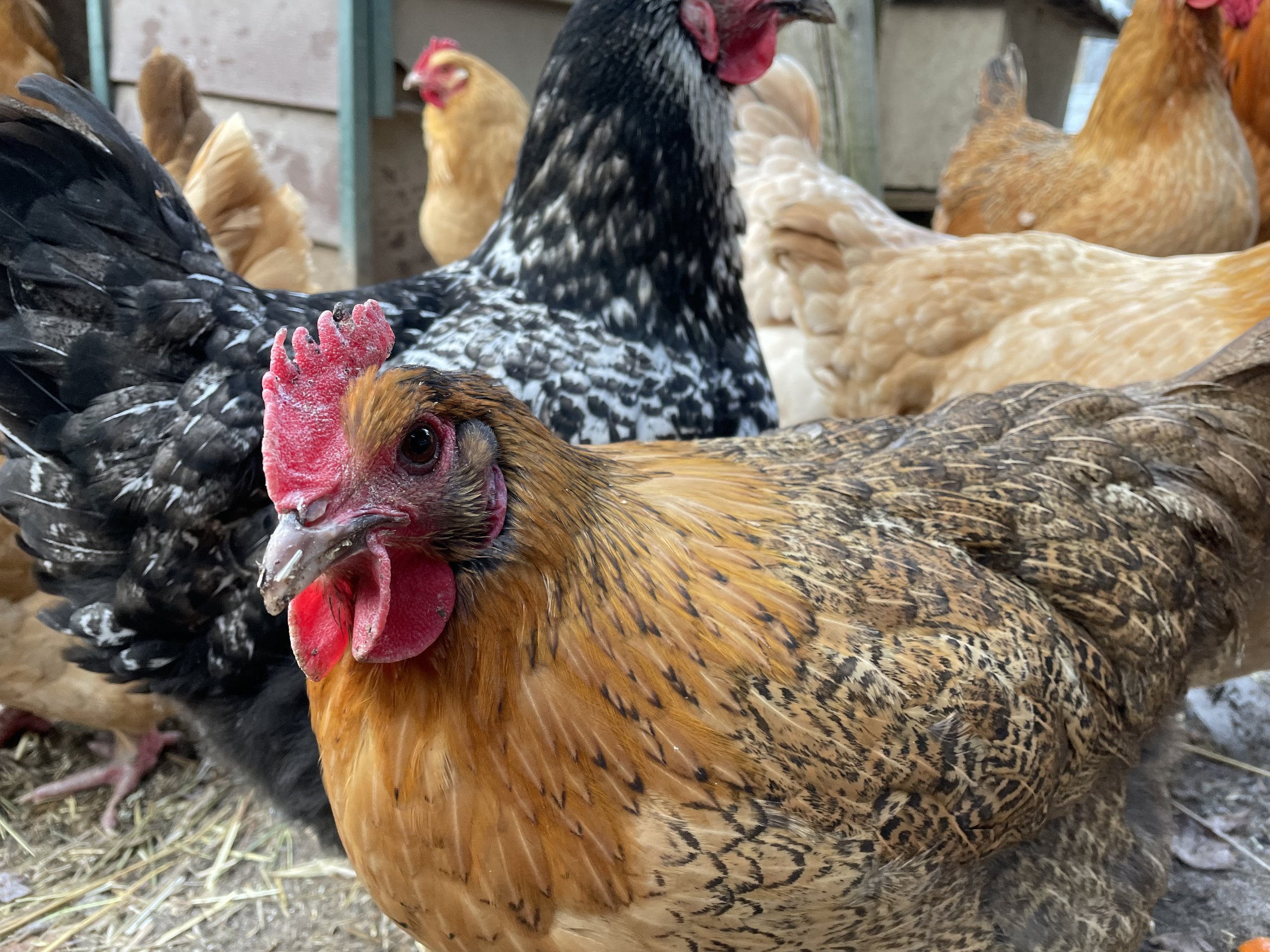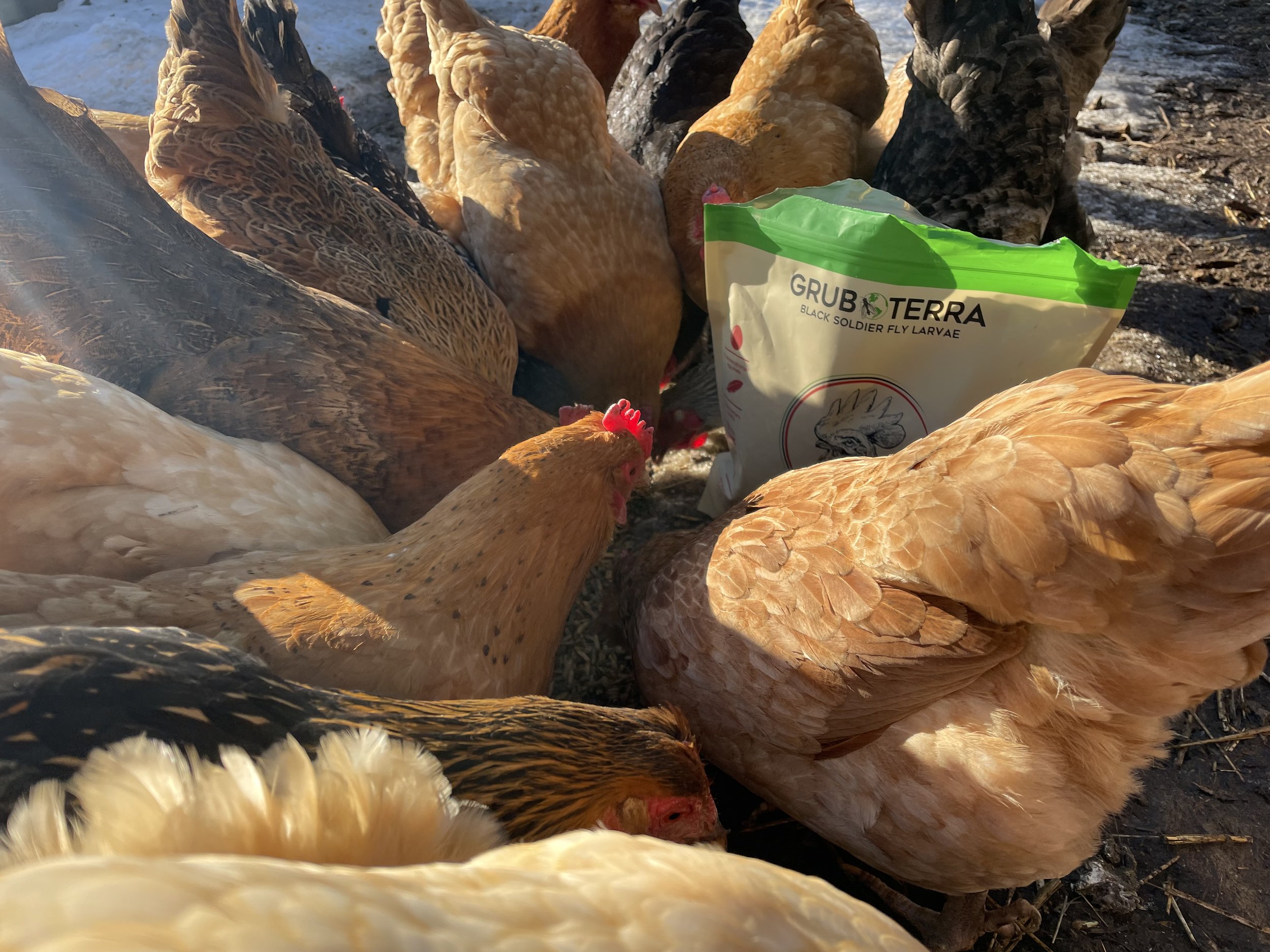How to Boost Your Chicken’s Egg Production In Winter
“Did you bring the goods?”
So you have a bunch of freeloading chickens on your hands do you? Well don’t worry so do I, but I do have some tips for you to turn those freeloaders into productive farm members once more. Let’s boost your chicken egg production back to where it should be this winter.
It is only natural that your old laying hens go through a molt in the late fall/early winter months. What a molt? Well in nice terms it’s where they replace all of their old feathers with new beautiful feathers. In farmer terms… it’s where your hens and roosters look like they got in a bar fight and lost badly. They could be missing most of their feathers for quite some time and let me tell you - they do not look pretty until they get their new feathers that is. This molt, plus the shortened daylight hours and the cold stormy winter weather all equals less eggs for you unless you know how to counter act the forces of nature … or rather work with them.
Egg production in winter can take a major hit unless you are able to provide a few things for your flock of laying hens. Light, warmth and proper nutrition are all things you should consider when trying to boost your chicken egg production not only in the winter months but year round. Boosting production is just a bit more difficult in the winter. I’ve learned a thing or two from having chickens on this farm and I’m going to share them with you today so hopefully you are able to keep yourself well supplied through winter with delicious eggs.
The first thing you need to do is to go out and buy a dozen eggs from the store. Wait! Stop! I’m just kidding. But seriously it seems like every time I’m running low and finally break down and go buy some eggs my chickens ramp up production and I’ve got eggs coming out of my ears again. hahaha sneaky chickens.
Let’s get serious. It is a good idea to let your hens rest from egg production while they molt. They will do this naturally. This allows them to use the nutrition to build new beautiful and strong feathers. After a few weeks though they should pick back up with their laying cycle. It is a good idea to replace your layers every two years if you want consistency and peak egg laying production. I however, raise chickens for more than just eggs. My chickens work hard to provide me with an endless supply of compost for my 1.5acre garden. The eggs are really a secondary benefit. So I do add new layers each spring when we incubate them, but I keep the old hens on the farm to assist with turning the garden & kitchen waste into compost.
If I choose to do nothing beside regular maintenance feeding with no additional protein, supply no extra light source and wait it out the hens will slowly decrease their egg production sometime in the late fall, begin thier molt and I will not get many eggs again until February or so. However if I’d like to boost my egg production immediately following the molt then there are a few things that can be done.
First of all add extra protein to their diet. You can do this by supplementing extra meat scraps from the kitchen, left overs from lard rendering, black oil sunflower seeds, meal worms, cracked corn (make sure its non GMO), left over milk from cheesemaking, soured milk, and/or black soldier fly larvae. I find that not only have these things boosted our egg production in the winter months, but they also help to give our eggs that bright yellow farm fresh egg yolk color and rich flavor. YUM!
Chickens enjoying black solider fly larva for the first time.
Recently a company called GrubTerra reached out to me and sent me a 5lb package of black soldier fly larvae in the mail! GrubTerra’s mission is to reduce food waste in landfills. They do this by recycling the food waste to feed the black soldier fly larvae and then produce a high protein chicken food for our flocks. Sounds like a win win to me. I love to support American companies who create solutions for problems modern humanity faces. You can try them out if you’d like by clicking this link. I am not an affiliate for this company and am also giving their product a try for the first time. I’d love to hear if you join me in trying their product out! I’m excited to see if this boosts my flocks winter egg production.
Check out this video of my chickens trying black soldier larvae for the first time!
Something many people decide to do is supplement with light in the dark winter months. Chickens need 12-14 hours of daylight to produce eggs. That’s certainly not happening up here where I live in North Idaho. We get 9 hours or so in the deep winter - and a bit less in the darkest part. Not enough for egg making. You can simply hang Christmas lights or put a light bulb in the coop and this will help. I personally have chosen not to go this route, but only because I do like my hens to get a bit of a winter break. It’s a personal decision that each of us need to make.
Lastly something I’ve found that really does make a difference to the health of my chickens in the winter months thereby facilitating better egg production is warmth. I do not recommend using a heat lamp - most barn fires are caused by faulty or broken heat lamps - however deep litter bedding is great! Warm comfy chickens equals happy chickens which makes for more eggs!
I hope that these simple solutions help boost your chicken’s egg production this winter! If you have any tips that have worked for you please let me know! We are always trying to improve our farming techniques and increase production on our farm. After all I do have three growing farm kids that are trying to eat me out of house and home. hahaha.
Learn & Grow
-Esther
Newly hatched chick




